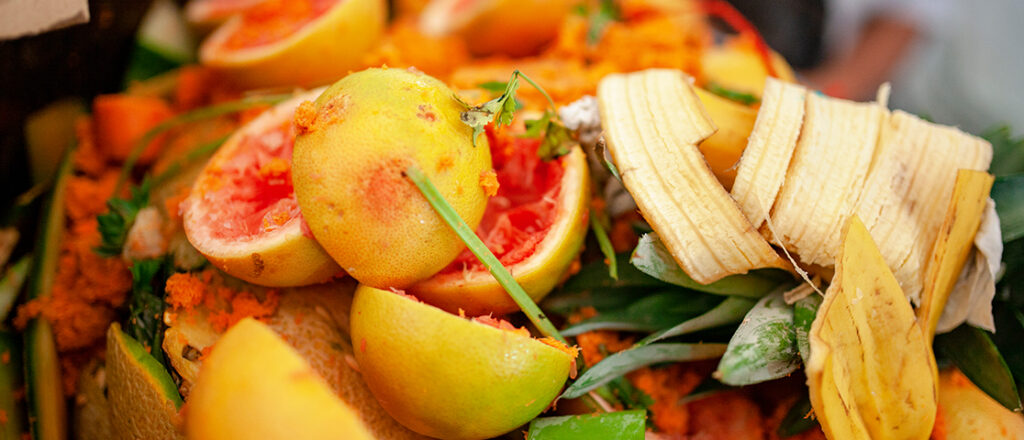
How to cut down on your food waste.
From uneaten leftovers to spoiled produce, most people don’t realize how much food they throw away each day. In the United States, each person wastes 219 pounds of every year. Our nation throws away a whopping 80 billion pounds of food annually – the equivalent of 1,000 Empire State Buildings.
So, what can you do to waste less food? It’s as easy as making small changes in how you shop for, prepare, and store your food. Here are some tips for shedding those unwanted wasteful pounds.
Planning Tips
By simply making a list with your weekly meals in mind, you can save money and time, plus eat healthier. If you don’t buy more than you expect to use, you’ll be more likely to keep it fresh and use it all.
- Keep a running list of meals and their ingredients for your household favorites. This way you can easily choose, shop for, and prepare meals.
- Make your shopping list based on how many meals you’ll eat at home. Will you order takeout this week? Will you be going out to eat? How often?
- Plan your meals for the week before you go shopping and only buy the things you need for those meals.
- Include quantities on your shopping list. By noting how many meals you’ll make with each item, you can avoid overbuying.
- Look in your refrigerator and cupboards first to avoid buying food you already have. Make a list each week of what needs to be used up, and then plan future meals around it.
- Buy only what you need and will use. Remember, buying in bulk will only save money if you’re able to use the food before it spoils.
Storage Tips
It is easy to overbuy or forget about fresh fruits and vegetables. When you store fruits and vegetables for maximum freshness, they’ll taste better and last longer, and entice you to eat more of them.
- Find out how to store fruits and vegetables so they stay fresh longer inside or outside your refrigerator.
- Freeze, preserve, or can surplus fruits and vegetables – especially abundant seasonal produce.
- Many fruits give off natural gases as they ripen, making other nearby produce spoil faster. Store bananas, apples, and tomatoes by themselves, and store fruits and vegetables in different bins.
- Wait to wash berries until you want to eat them to prevent mold.
- Like to eat fruit at room temperature? Fruits should be stored in the refrigerator for maximum freshness. So, take what you’ll eat for the day out of the refrigerator in the morning.
Prep Tips
Prepare perishable foods soon after shopping. This will make it easier to whip up meals or snacks later in the week – saving time, effort, and money.
- When you get home from the store, take the time to wash, dry, chop, dice, slice, and place your fresh food items in clear storage containers for snacks and easy cooking.
- Make friends with your freezer and visit it often. Try these cool ideas:
- Freeze food like bread, sliced fruit, or meat that you know you won’t be able to eat in time.
- Cut your daily time in the kitchen by preparing and freezing meals in advance.
- Prepare and cook perishable items like chicken breasts or taco meat, then freeze to use throughout the month.
Thriftiness Tips
Be mindful of old ingredients and leftovers you need to use up. You’ll waste less and you may even discover a new favorite dish.
- Shop in your refrigerator first. Cook or eat what you already have at home before buying more.
- Have produce that’s past its prime? It may still be fine for cooking. Think soups, casseroles, stir fries, sauces, baked goods, pancakes, or smoothies.
- If it is safe and healthy, use the edible parts of food that you normally don’t eat. For example, stale bread can be used to make croutons, beet tops can be sautéed for a delicious side dish, and vegetable scraps can be made into stock.
- Learn the difference between “sell-by,” “use-by,” “best-by,” and expiration dates.
- Are you likely to have leftovers from any of your meals? Plan an “eat the leftovers” night each week.
- Casseroles, stir-fries, frittatas, soups, and smoothies are great ways to use leftovers, too. Search for websites that provide suggestions for using leftover ingredients.
- At restaurants, order only what you can finish by asking about portion sizes and be aware of side dishes included with entrees. Take home the leftovers and keep them for later or to make your next meal.
Source: epa.gov
